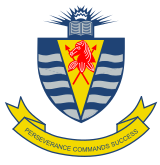| Aitchison College | |
|---|---|
ایچیسن کالج | |
 | |
 | |
| Location | |
 | |
Shahrah-e-Quaid-e-Azam Lahore Punjab , 54000 Pakistan | |
| Coordinates | 31°33′06″N74°20′47″E / 31.5516555°N 74.3463241°E |
| Information | |
| Former name | Punjab Chiefs' College |
| School type | Semi-Private Day & Boarding School |
| Motto | Perseverance Commands Success |
| Established | 2 January 1886 |
| Founder | Charles Umpherston Aitchison |
| Patron-in-Chief | Quaid-e-Azam Muhammad Ali Jinnah (1948) |
| Oversight | Governor of Punjab, through the Board of Governors |
| Principal | Dr. Syed Muhammad Turab Hussain |
| Bursar | Mr. Khalid Noon |
| Head of school | Ms. Amina Kamran (Senior School) Mr. Raja Ashfaq Ahmed (Prep School) Ms. Fatima Mubeen (Junior School) |
| Gender | Boys |
| Age range | 5–18 |
| Enrolment | 1,100 (Senior school) 750 (Prep school) 1,000 (Junior school) |
| Area | 200-acre (81 ha) |
| Houses | 17 (Senior School) Alamgir Babur Balochistan Centenary Goldstein Godley Ghazi Hali Jinnah Jubilee Kelly K&Ns Leslie Jones Robinson Sikander Shirazi Tajuddin 12 (Prep School) 9 (Junior School) |
| Colors | Blue and yellow |
| Song | ہمیں جان سے پیارا ہے یہ چمن “Humein Jaan Say Pyara Hai Yeh Chaman” |
| Publication | The Aitchisonian |
| Affiliation | G 30 Schools International Boys' Schools Coalition (IBSC) The Schools Index (Carfax Education) Spear’s School Index Top 10 (Rest of the World) Academic: Cambridge International Schools Federal Board of Intermediate and Secondary Education (FBISE) Aga Khan University Examination Board (AKU-EB) |
| Alumni | Aitchisonians (Old Boys) |
| Website | Aitchison College |
Aitchison College is an elite semi-private, day and boarding school encompassing both Junior School and Secondary School for boys, located in Lahore, Pakistan. It has educated prime ministers, including but not limited to Imran Khan, Zafarullah Khan Jamali, and Feroz Khan Noon, as well as numerous presidents, lawyers, cricketers, and politicians. It is often described as the Eton of Pakistan. [1]
Contents
- History
- Wards at Ambala
- Chief's College
- Aitchison College
- Schooling system
- Junior School
- Prep school
- Senior school
- Notable alumni
- References
- Further reading
- External links
Aitchison was originally formed on 2 January 1886 in then British India, as the Punjab Chiefs' College and was renamed Aitchison College on 13 November 1886. [2] However, the inception of the college can be traced back to 1868 as the Wards School in Ambala after which it became Chiefs' College in Lahore.
It is a member of the G30 Schools of the World. Aitchison College is also the only school in Pakistan's history to be listed in the Carfax ranking of the top 125 institutions of the world. [3]
The current serving Principal of Aitchison is former Lahore University of Management Sciences Economics Professor, Sayed Muhammad Turab Hussain. He assumed office after the former Principal Sr. Michael A. Thomson resigned in protest after the then-governor of Punjab, Baligh Ur Rehman, allowed a leave of absence and a complete fee waiver for a period of three years to two children of former bureaucrat and Federal Minister for Economic Affairs Ahad Cheema. [4]



